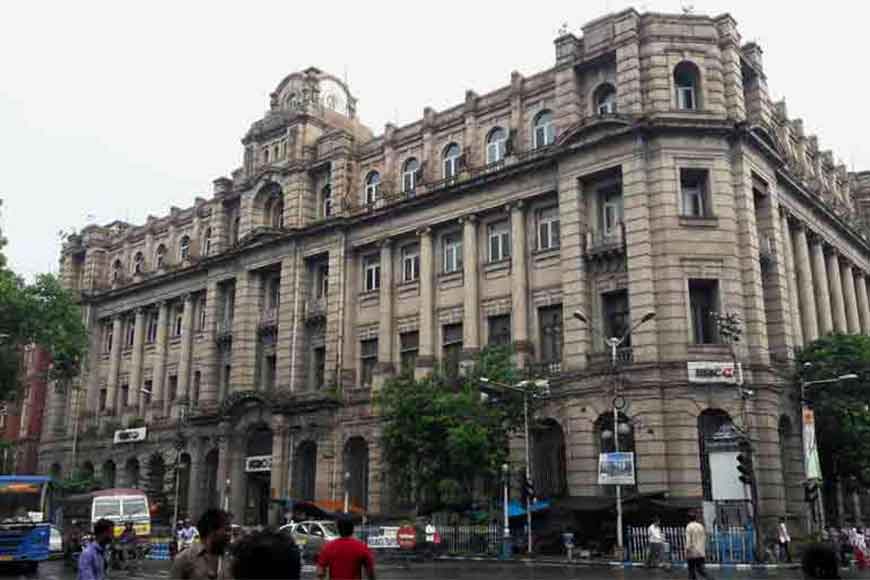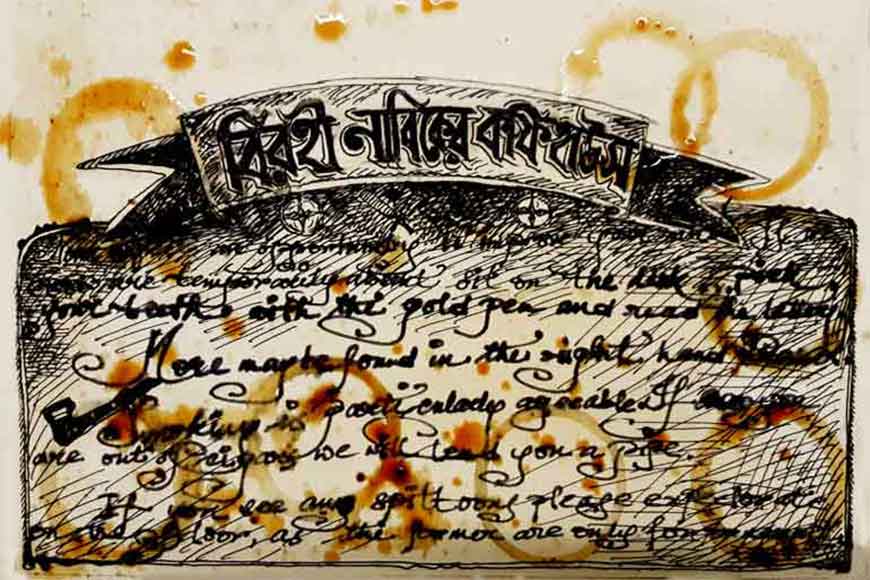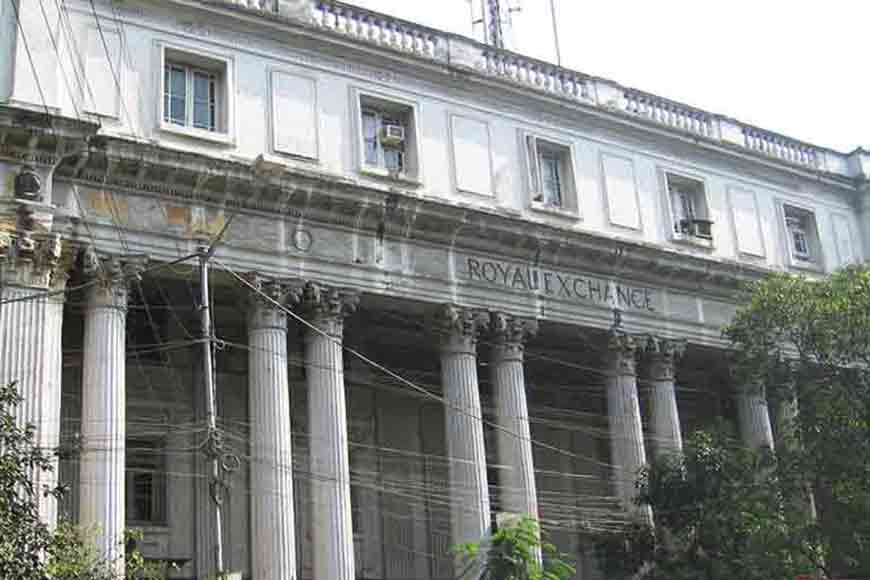The iconic Coffee House and its predecessors

It was Calcutta when British aristocrats, senior East India Company officials and young Brits, who had landed in this native land with a job, were bored due to lack of any languid activity. They had no place to sit and relax, to chat or debate on burning issues of that time. William Parkes took the initiative and sent a letter to senior officials of East India Company, seeking their permission to set up a tavern/motel on a plot he had bought in the city. He proposed to make necessary changes in the architecture of the bungalow with his own resources to create a suitable ambiance for the purpose.
The officials were only too glad to get such a proposal and it was sanctioned without delay. They were aware how their British employees were bored and miserable in an alien land, without any recourse to relaxation in clubs, hotels or taverns. However, a couple of military officials raised their eyebrows and opposed the sanction. They felt a majority of young British military officers who had come to India out of compulsion, missed England and their mistresses. Often,they took up pens instead of pistols to compose long doleful poems, addressed to their mistresses and went to the extent of bribing local middlemen to get hold of shipmates to deliver their letters to their beloved in England.

British folks working in India had been unable to get over their home sickness and yearned to transform Calcutta to another London. They were willing to go to the extent of changing the very facadeof Calcutta to make them feel at ‘home.’ So, Parkes created a fancy ‘Coffee Room’ in his London Hotel where a cup of coffee cost a sikka. This money ensured not just a cuppa, but also access to newspapers free of cost.
The army heads felt these young men were not trustworthy and might get sozzled and spend their days cooped up in taverns and forget their responsibilities. This could ruin the company’s expansion interests in India. Some senior officials were also found to be equally irresponsible. They moved around the city like royalty, spent their days amid luxury. They married local girls, remained tipsy most of the time and ushered in courtesans to perform in their barracks. This necessitated framing and implementing strict laws for all. The rule thus framed, said, ‘It was not to be open in the morning as the board was afraid it would be the means of keeping people from doing their duty.’ Parkes adhered to the law and started his venture naming it ‘London Hotel.’
Till then, British folks working in India had been unable to get over their home sickness and yearned to transform Calcutta to another London. They were willing to go to the extent of changing the very facadeof Calcutta to make them feel at ‘home.’ So, Parkes created a fancy ‘Coffee Room’ in his London Hotel where a cup of coffee cost a sikka. This money ensured not just a cuppa, but also access to newspapers free of cost. The ambiance of the coffee room created an aura of England in the city. The Brits found an anchorage of sorts as they participated in prolonged discussions and debates over various issues with cups of steaming hot coffee placed next to them on tables.
However, the young British men were not easy to please or tamed and instead of a secluded coffee corner in the hotel, they demanded an entire sprawling coffee house for socializing and relaxing. Amid this tussle, a coffee house was set up and named ‘Calcutta Exchange Coffee House.’ Here, a customer could access English newspapers published from Calcutta and alsofrom Madras. This place became the hub of activities and educated gentlemen and businessmen congregated for informal chat sessions on evenings. The student community was not a part of the crowd, because there was no such society back then. Those who frequented the coffee house paid a subscription and became members. Every evening they debated on various issues and often the sound of their excited verbal wars, reached the streets and pedestrians, out of sheer concern, summoned policemen to stop an ensuing physical violence in the coffee house. This shouting and cursing was quite normal and an integral part of the coffee house culture.
Also read : How is Manna Dey’s Coffee House doing?
But this lively coffee house shut its door following an acute cash crunch. The grandeur of the house, the beautiful rococo painted cups and saucers, the lively crowd -- all was lost as the auctioneer’s hammer came slamming down. Only the deserted building remained as a remnant of its glorious past. The Royal Exchange building that we see today housed the Calcutta Exchange Coffee House.

However, the closure of the Calcutta Exchange Coffee House could not deter enthusiasts who began exploring various other avenues to set up another coffee house in the city. AuthorSripantha who specialized in painstakingly digging out old and interesting snippets about the city from various sourceswrites about another coffee house that was a contemporary of Calcutta Exchange Coffee House and named Jerusalem Coffee House.
There was a coffee house in London with an identical name. Set on Coopers’ Court, the estate of poet Thomas Cooper’s father, it was operational till 1888. The Jerusalem Coffee House was very different from others. This place was patronized by only those who had any business interests in India, wrote William Hicky.
Hicky himself frequented the coffee shop to acquire knowledge about India as he heard stories and descriptions from seamen, soldiers and civilians who had been to the alien land and went back to relate their myriad tales. Those keen to know the latest news about India, the condition of the country etc visited the coffee house. The venue used to double as the unofficial but authentic source of news about tentative dates of ships sailing to India or those returning and anchoring in England. So those who had official or business interests in India had a natural affinity towards Jesusalem Coffee house.
However, the newly-arrived Brits had no such meeting point in Calcutta. The sailors felt quite bored and lonely after their ship anchored on the Ganga. They often missed their boisterous Jerusalem Coffee House of London and wished for a similar joint here.
In 1790, John MacDonald, a dance teacher arrived from London and the first thing he noticed was the absence of a ‘Jerusalem’ in the city. He decided to start a coffee house in Calcutta with the same name. He bought a house at Dalhousie Square at the intersection of Council House Street and started Jerusalem Coffee House. But soon, he realized it was not a viable business project. Lord Wellesley rented the house and set up a college. It was named Fort William College and this was the final nail in the coffin of Jerusalem Coffee House. But the building still stands tall amid corporatesplendor and riches. No sailor sits there chatting, nor do English poets write to their beloved in England. None can even imagine that this huge building once housed a cozy comfort zone for mariners who discussed their journey plans to and from India over a cup of coffee. Yet the building stands tall. The signboard outside reads, HSBC i.e., Hongkong and Shanghai Banking Corporation. This can safely be termed as the predecessor of our contemporary College Street Coffee House.










